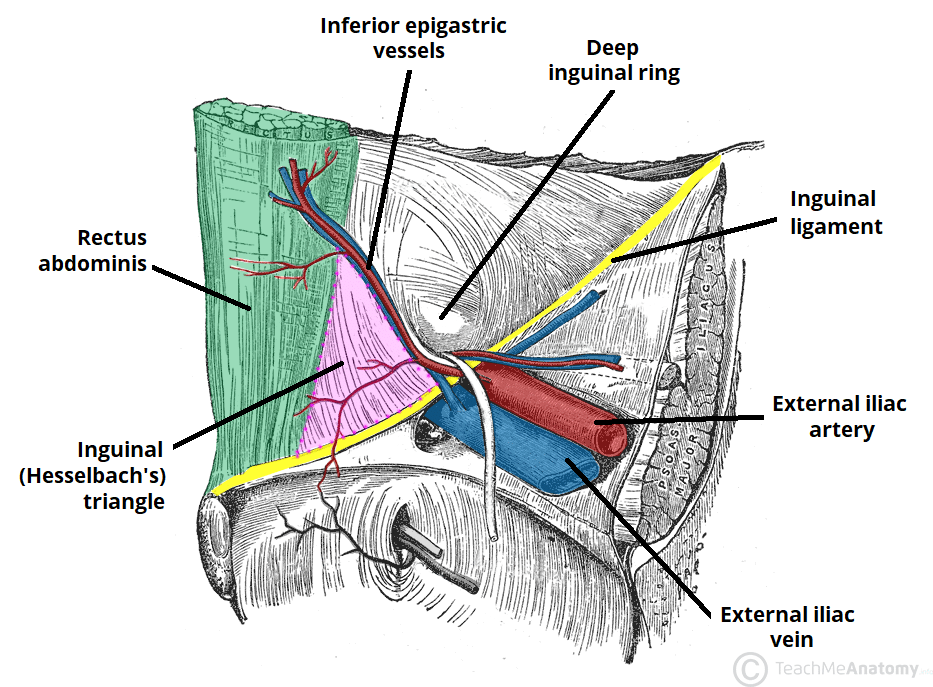The inguinal triangle (Hesselbach’s triangle) is a region in the anterior abdominal wall. It is alternatively known as the medial inguinal fossa.
It was first described by Frank Hesselbach, a German surgeon and anatomist, in 1806.
In this article, we shall look at the anatomy of the inguinal triangle – its borders, contents and clinical relevance.
Premium Feature
3D Model
Borders
The inguinal triangle is located within the inferomedial aspect of the abdominal wall. It has the following boundaries:
- Medial – lateral border of the rectus abdominis muscle.
- Lateral – inferior epigastric vessels.
- Inferior – inguinal ligament.
Contents
Other than the layers of the abdominal wall, the inguinal triangle does not contain any structures of clinical importance.
However, the triangle does demarcate an area of potential weakness in the abdominal wall – through which herniation of the abdominal contents can occur.
Clinical Relevance
Direct Inguinal Hernia
A hernia is defined as the protrusion of an organ or fascia through the wall of a cavity that normally contains it. The inguinal triangle represents an area of potential weakness in the abdominal wall, through which herniation can occur.
In a direct inguinal hernia, bowel herniates through a weakness in the inguinal triangle, and enters the inguinal canal. Bowel can then exit the canal via the superficial inguinal ring and form a ‘lump’ in the scrotum or labia majora. Direct hernias are acquired (usually in adulthood), due to weakening in the abdominal musculature.
This is in contrast to an indirect inguinal hernia – where bowel enters the inguinal canal via the deep inguinal ring.
By definition, a direct inguinal hernia occurs medially to the inferior epigastric vessels (through the inguinal triangle), and an indirect hernia occurs laterally to these vessels.
See here for more information on direct and indirect inguinal hernia.


